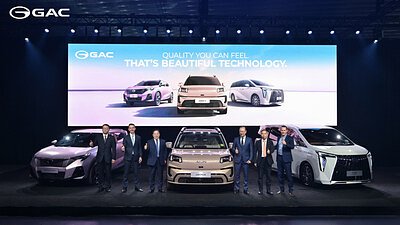
GAC Drives into Australia: Can the Chinese Automaker Disrupt the EV Market?
GAC Group launches in Australia with a range of electric and hybrid vehicles, backed by a significant investment and ambitious growth plans. But can the newcomer challenge established brands in a competitive market?
GAC Drives into Australia: Can the Chinese Automaker Disrupt the EV Market?
SYDNEY, AUSTRALIA – November 18, 2025 – Chinese automotive manufacturer GAC Group officially launched its Australian operations today, unveiling three new models – the AION V (electric SUV), M8 PHEV (plug-in hybrid MPV), and EMZOOM (electric SUV) – and signaling a serious intent to shake up the South Pacific automotive landscape.
A Bold Entry into a Competitive Market
GAC’s arrival isn’t just another new car launch; it represents a significant expansion of Chinese automotive influence globally. The company, backed by the strength of a state-owned enterprise, is pursuing a strategy of both export-led growth and localized production, with factories already under construction in Malaysia, Thailand, and Indonesia. “This is a long-term play for GAC,” notes an industry analyst. “They aren't just looking for quick sales; they're building a sustainable presence in key international markets.”
The Australian market, while smaller than giants like the US or China, is increasingly receptive to electric and hybrid vehicles. Sales have more than doubled in recent years, driven by rising fuel costs, environmental concerns, and government incentives. GAC is positioning itself to capitalize on this momentum with a lineup focused on electric and plug-in hybrid technology. The AION V, in particular, aims to compete directly with popular electric SUVs like the Tesla Model Y and Hyundai Kona Electric.
However, GAC faces a well-established and competitive field. Toyota, Hyundai, Ford, and Mazda all have strong brand recognition and extensive dealership networks in Australia. “Breaking through the noise and winning over consumers will be a major challenge,” says one automotive marketing executive. “They’ll need a compelling value proposition and a robust marketing strategy.”
More Than Just Cars: Building a Local Ecosystem
GAC isn’t simply importing vehicles; the company is committing to building a local ecosystem. The plan to establish over 100 dealerships within five years demonstrates a long-term vision, and the commitment to a seven-year/unlimited mileage vehicle warranty and an eight-year/unlimited mileage battery warranty is an unusually generous offering in the Australian market. “That kind of warranty signals confidence in their product and a desire to build trust with Australian consumers,” explains a vehicle reliability expert. “It addresses a key concern for buyers – the longevity and reliability of electric vehicle batteries.”
The company is also addressing concerns about charging infrastructure. By promising DC/AC charging at all dealerships and complimentary home chargers, GAC is attempting to alleviate “range anxiety” and make EV ownership more convenient. However, building out a nationwide charging network remains a significant hurdle. “While dealership charging is a good start, it won't be enough to support widespread EV adoption,” one infrastructure analyst points out. “GAC will need to collaborate with existing charging providers and potentially invest in expanding the network.”
Navigating the Shifting Global Automotive Landscape
GAC’s Australian launch is part of a broader global strategy, underpinned by the company’s “Panyu Action” initiative. This plan focuses on strengthening the GAC brand, investing in research and development, and expanding its international footprint. The company is aggressively pursuing localized production, aiming to reduce costs and improve responsiveness to local market demands. “This isn’t just about exporting cars; it’s about becoming a truly global automaker,” explains an industry observer.
The rise of Chinese automakers is reshaping the global automotive landscape. Companies like BYD and MG have already gained a foothold in the Australian market, and GAC is now joining the fray. This increased competition is likely to benefit consumers, with lower prices and a wider range of vehicle options. However, it also presents challenges for established brands, forcing them to innovate and adapt to maintain their market share. “The Australian automotive market is becoming increasingly dynamic,” says a retail analyst. “Established players can’t afford to be complacent.”
Whether GAC can successfully disrupt the Australian automotive market remains to be seen. The company faces significant challenges, including building brand recognition, establishing a robust service network, and navigating a competitive landscape. However, with a clear strategy, a commitment to innovation, and a willingness to invest in the long term, GAC has the potential to become a major player in the South Pacific automotive industry.
📝 This article is still being updated
Are you a relevant expert who could contribute your opinion or insights to this article? We'd love to hear from you. We will give you full credit for your contribution.
Contribute Your Expertise →